A Complete Guide To 11 Low Nitrogen Fertilizers

This post follows our research editorial guidelines.

Why use a low-nitrogen fertilizer? It seems like the opposite of useful to avoid putting the number one most important nutrient onto our garden beds. But it’s possible to have too much of a good thing especially when you’re looking for bigger blooms, so how do we pivot to provide only what is needed?
Low-nitrogen fertilizers are best chosen depending on what else they provide. Manures, composts, and mulches all provide good structure and micronutrients, while bone, fish and kelp meal provide nutrients often missed in high-nitrogen fertilizers.
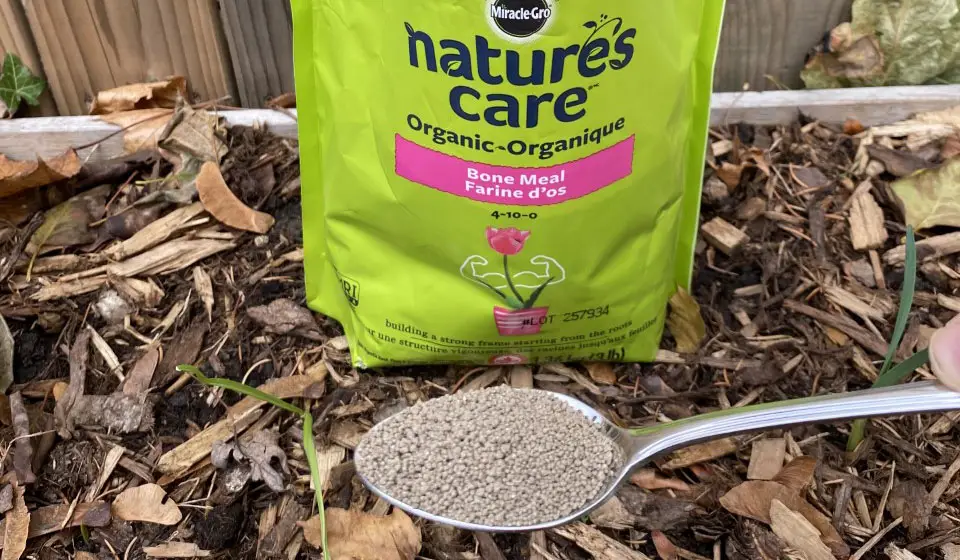
Table of Contents
“A fertilizer is a material that directly impacts a plant, providing it with specific nutrients. Some amendments, like composted manures or limestone can function both as a soil conditioner and fertilizer.”
Nanette Londeree, Division of Agriculture and Natural Resources, University of California
Why use a low-nitrogen fertilizer?
While plants need nitrogen to produce strong leaves, it’s not the only thing that they need to thrive. Sometimes they need totally different minerals or nutrients.
There are seventeen different nutrients that plants require – and nitrogen is just one of them. Other biological functions demand nutrients that are present in the soil along with nitrogen. Nutrients like calcium, magnesium, and iron are critical for the growth of good flowers and fruit, and without them, you may face poor yields, weak growth, and plants that die before they reach their true potential. Other trace elements are responsible for seed germination and root development.
So while it may seem reasonable to add a nitrogen-rich fertilizer to your soils, it’s worth ensuring that’s what you really need. Sometimes Consider using a commercial soil test to check what you may be missing so you can target your treatment. They’re cheaply available on Amazon and can help point you toward what you need for your soil. Failing that,
most Universities across the country have an extension service that can provide soil testing and advice that’s tailored to your location.
Too much nitrogen can lead to its own suite of issues. Most commonly you wind up with leaves that are yellow or display browned tips. It’s also possible for the nitrogen in the soil to overload the plant and reduce its capacity to absorb the minerals actually needs.
What is Nitrogen Made of?

Nitrogen is an element, and it’s present in vast amounts in the atmosphere. Your fertilizer almost always contains nitrogen taken from the air. It finds its way into fertilizer in a couple of ways.
Synthetic fertilizers are manufactured using something called the Haber-Bosch process which draws nitrogen from the air and converts it to ammonia. It’s an energy-intensive process that also uses a lot of fossil fuels, but without it, there’s be a lot of hungry people. Around half the worlds food production relies of fertilizer produced this way. Its likely that you’ve used fertilizer produced with this technique.
Organic fertilizers on the other hand exploit the nitrogen already in plants. While some plants like legumes and clover can draw nitrogen from the air for their growth, most take it from the soil. They use it as expected to build the leaves, stems, and branches of themselves. In the fullness of time they die, and that nitrogen can be accessed once more. When composted, the decomposing matter releases its nitrogen into the soil nearby.
Other organic fertilizers like manure and livestock products let animals do the work for us in processing that plant-based nitrogen. Urine and feces are rich with nitrogen and other minerals taken from an animal’s diet, and even worm castings and the like are the byproducts of tiny creatures going about their lives. Once they too shuffle off this mortal coil their bodies decompose much like plant matter does, releasing nitrogen again.
Finally, there are some sources of nitrogen that don’t involve these natural cycles or modern chemistry. Nitrogen in some fertilizers may come from mineral sources, mined from nitrate deposits of one type or another around the world.
Do All Fertilizers Contain Nitrogen?
Do All Fertilizers Contain Nitrogen?
Not all fertilizers contain nitrogen. It pays to check the label.
Most growers are concerned with three main nutrients in their fertilizers – nitrogen (the chemical symbol N), phosphorus(P), and potassium(K). Commercial fertilizers usually have the ratio and percentage of each printed as the ‘NPK ratio’ somewhere on the front of the box or bag. It gives you an idea of how rich a source of nutrients is, and whether or not it’s balanced. A powerful fertilizer will have large numbers, ideal for dilution or application over a large area. Ready-to-use liquid fertilizers often have smaller numbers that are closer together.
If the number at the front of this ratio – the N number – is zero, it means the fertilizer has no nitrogen in it. It’ll often have plenty of potassium or phosphorus. A fertilizer with no NPK at all means it contains only the other trace minerals instead.
11 Low to No Nitrogen Fertilizers
1. Kelp Meal
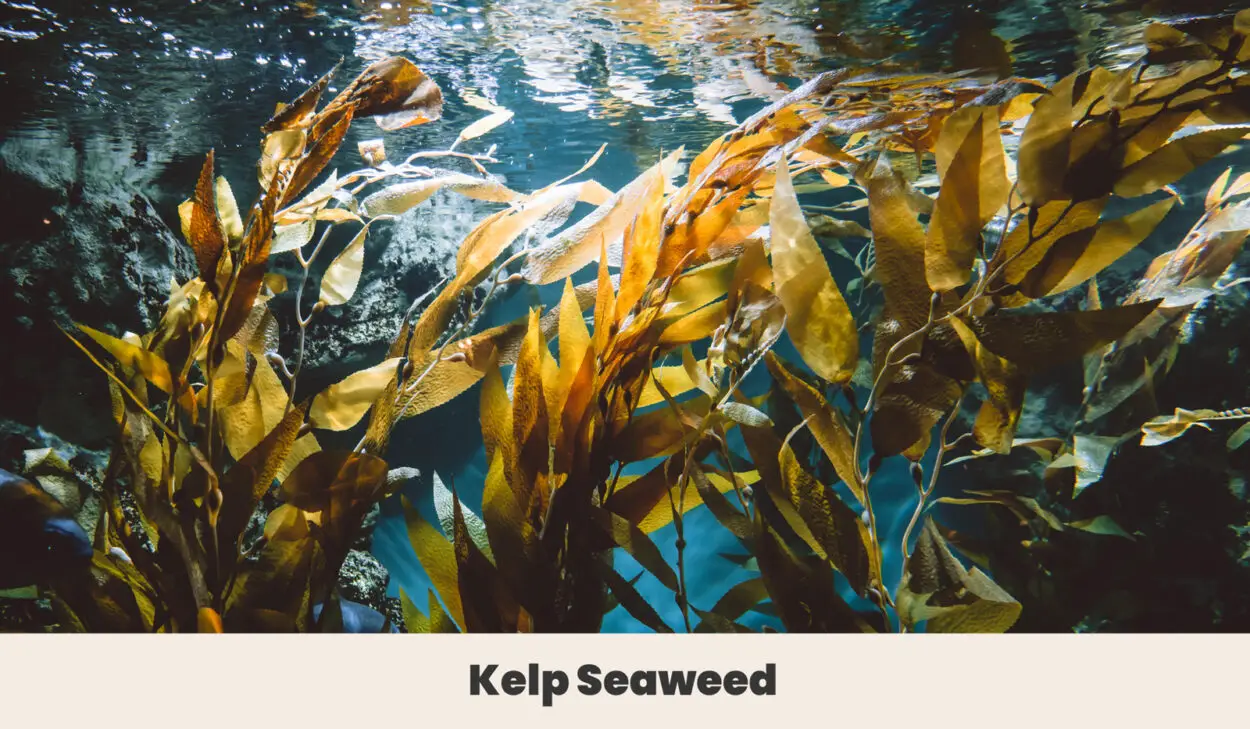
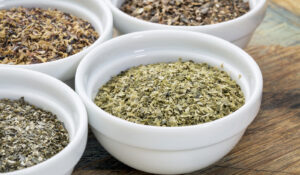
Kelp meal is finely ground kelp leaves. It contains a reasonable amount of phosphorus, though its real value is in the other micronutrients a plant needs. It’s also rich in plant hormones that promote strong growth, especially in the roots. I write more on kelp meal here. It’s an excellent once-yearly tonic for your garden. If you’re like me and love your indoor plants just as much as your garden check out this easy-to-use liquid seaweed fertilizer.
It’s worth checking the label on any kelp meal products you use, as it’s common for producers to add synthetic or mineral nitrogen to the mix in order to make a more appealing product.
2. Cow Manure
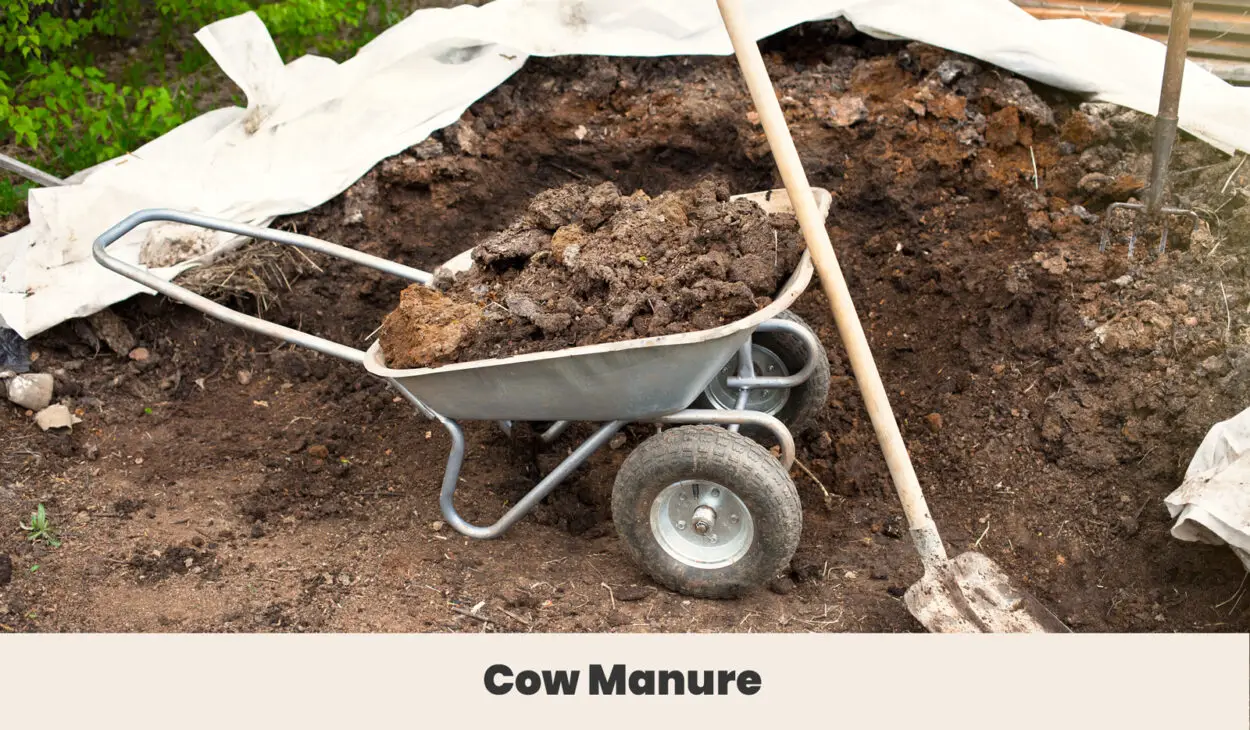
Manure has been a long-recognized source of nourishment for gardens for pretty much as long as we’ve been growing plants, so it’s no surprise that over the years we’ve worked out which manures are best.
Cow manure is the lowest in nitrogen of the commercially available manures, as little as less than 1% by weight, even when fresh. Composted manure can have an effective nitrogen level of basically nothing, as the longer it’s left to rot the less nitrogen remains. It’s a good source of phosphorus and other trace elements and does well to suppress weeds as a ground cover or mulch. When added to soils can improve its structure, the partially digested remains of hay and lucerne absorb moisture and help the soil hold moisture and nutrients more effectively.
3. Bone Meal

Bone meal sounds grim, but it’s actually a sustainable way to add calcium and phosphorous to your soil. It’s made from ground bones taken from slaughterhouses, putting what would otherwise be hazardous waste to good use. The bones are heat treated to kill pathogens and then ground into a meal.
It’s particularly useful for heavy-feeding food crops like tomatoes and peppers, as they use a lot of calcium to produce their fruit. I write more on using bone meal here.
That said this is one of the most unpleasant fertilizers to use, as it really does smell like blood. I prefer to mix it into soils during planting or to give a boost to mulches and compost.
4. Leaf Compost
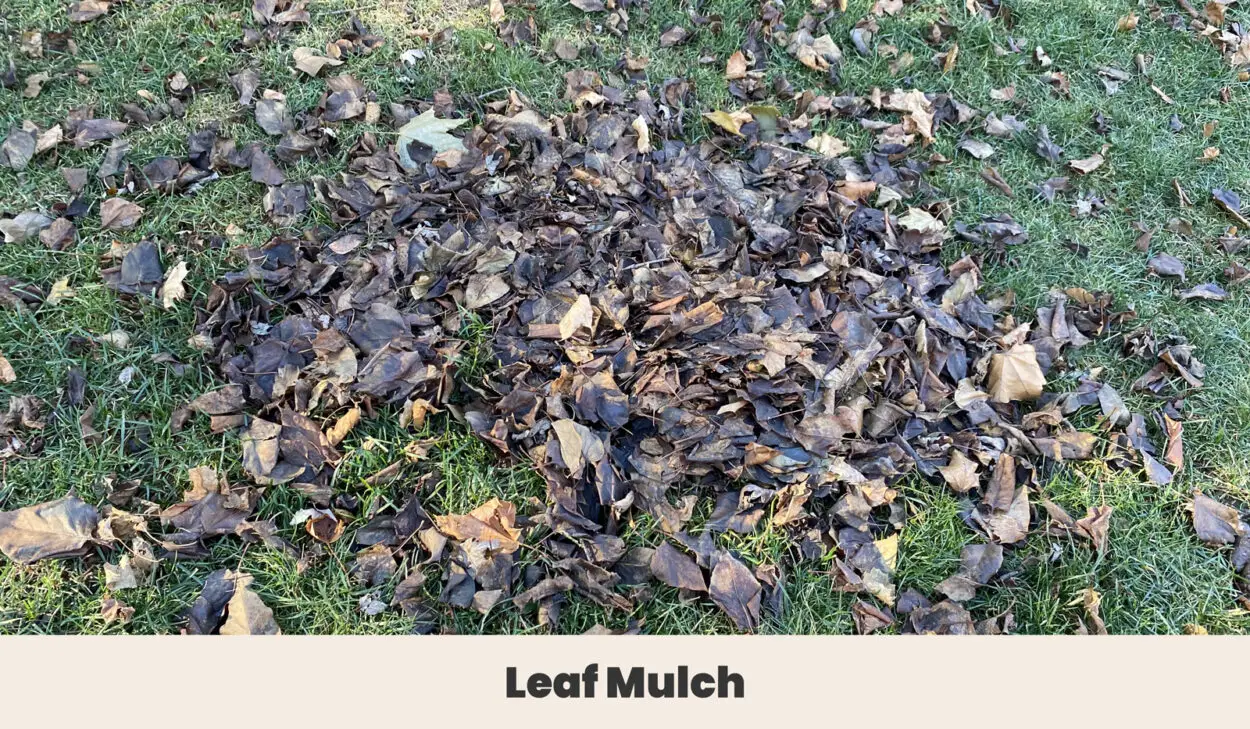
Composting is a fine art, allowing you to tinker with the nutrient load in the end result. For a low-nitrogen compost, using mostly dry plant material will give you a nutrient-dense, mulch-like material that provides an enduring source of phosphorous, potassium, and other minerals. Leaves are the best for this, easy to source and work with, and a compost that is high in leaves will by nature be low in nitrogen but high in other essential nutrients that plants require. Added to soils or used as a cover, it will suppress weeds and slowly release all that goodness, and cow manure can be worked into the soil too.
5. Wood Chips

While generally considered to be more of a mulch than a fertilizer, agricultural scientists are unlocking the ways that wood chips can enrich the soil. Wood chips are high in carbon and other trace minerals, and break down slowly and surely for enduring nutrition. It too suppresses weeds as a ground cover, slowly releasing its load of micro-nutrients. Studies involving whole wood chips buried in orchards suggest that wood chip produces long-term benefits within the soil, too.
6. Wood Ash

Wood ash is produced by the burning of timber, a process that removes the carbon and concentrates calcium, magnesium, potassium and other micronutrients. It’s an excellent supplement for flowering plants, a process that’s very nutrient intensive.
This is a tricky substance to use, however. It’s notably alkaline, however, and must be used with caution as it can completely trash the acidity of your soil if you’re heavy handed. It is one of the most condensed and easily taken up of all sources of potassium, so if you have a known deficiency and your soil is already starting to sour it can be a real lifesaver.
7. Iron Chelate
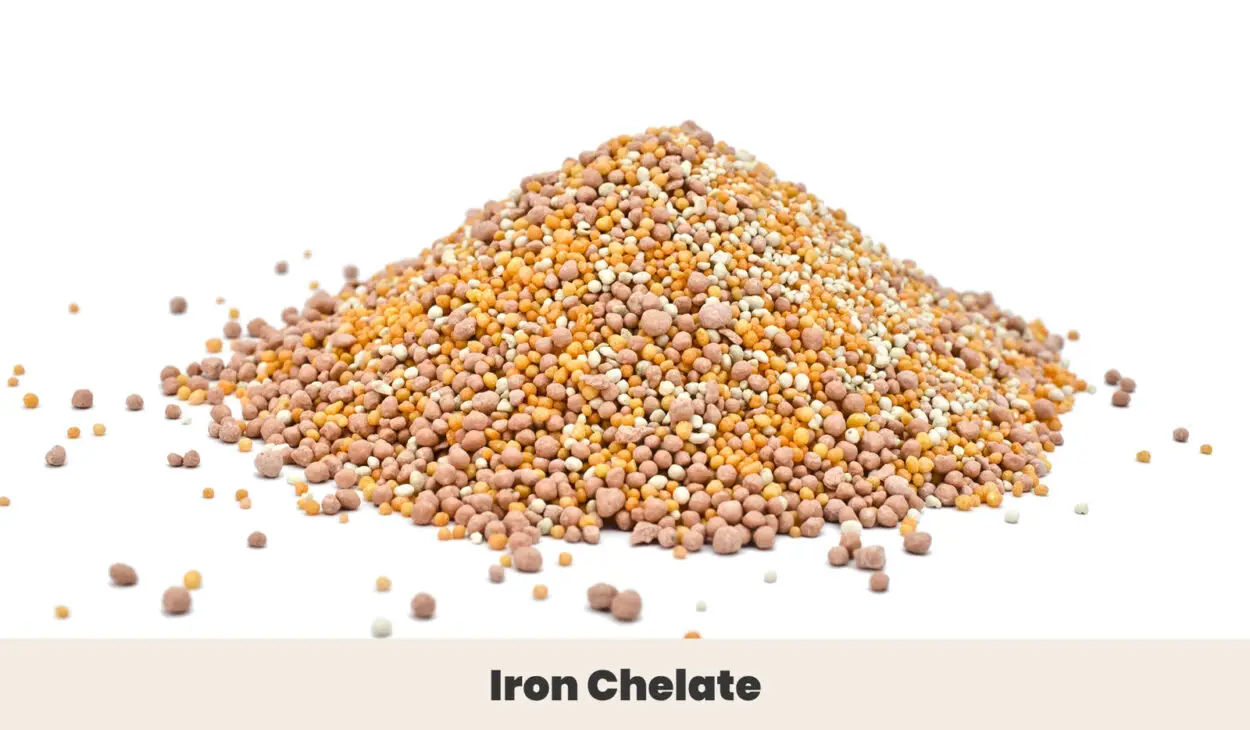
Especially useful for chalky, alkaline soil is the occasional dose of iron chelate. This fertilizer improves the available iron and treats deficiency diseases that result in yellowing leaves. It’s a form of iron salt that’s specifically chosen because it’s easily taken up by the plants – very often iron deficiency is a result of soil chemistry problems like issues pH or too much of another nutrient – including nitrogen.
8. Lime

Lime is ground limestone, used to both provide calcium and magnesium to soils and to improve its pH. Mildly acidic soils allow plants to access nutrients, so keeping that pH just right is key to getting fertilizers to actually do their job in the first place. It’s also an effective pest treatment – very handy for fleas, ticks and other pests.
9. Epsom Salt
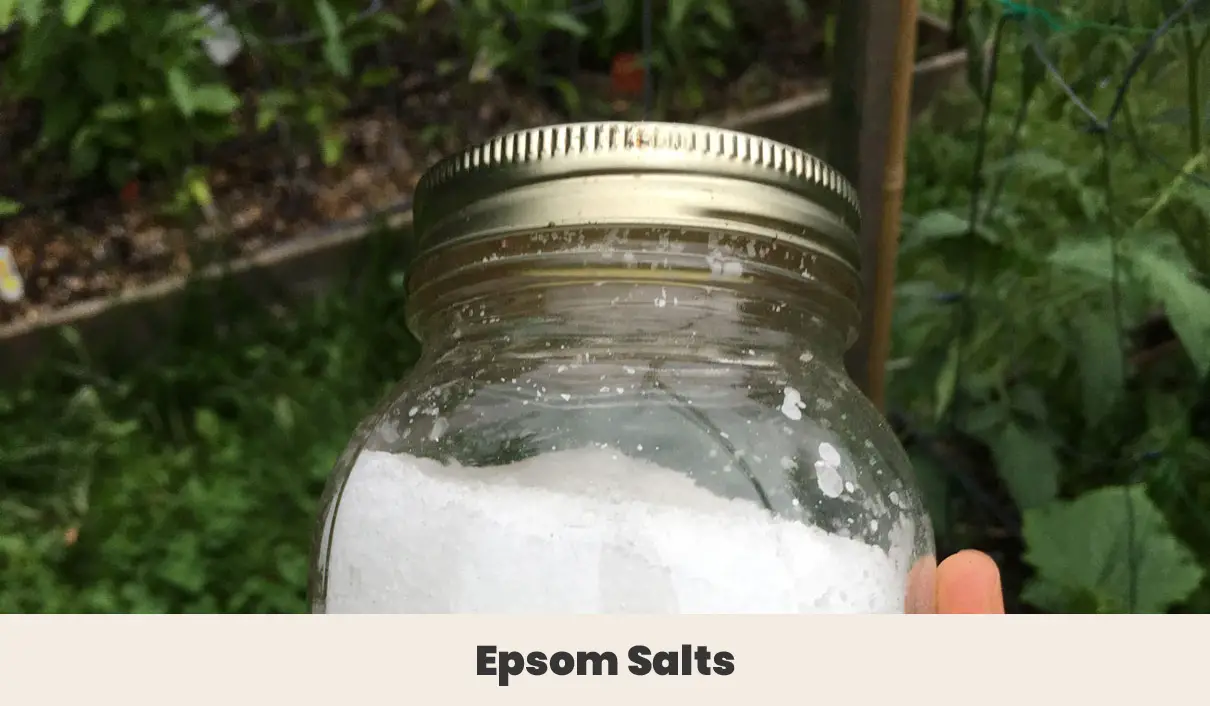
Epsom salts are magnesium sulfate, useful to add to plants that are struggling with either magnesium or sulfur deficiencies. Both elements are critical to the production of flowers and fruit, so it’s a familiar recommendation for tomato and pepper growers. It’s said to be a miracle cure, and it will miraculously boost the growth of your plants, – provided they are lacking in either element first!
It does have a habit of building up in the soil, and like most other inorganic fertilizers you really do need to check that it’s needed before you use it.
10. CalMag Solution
CalMag solution is a liquid fertilizer that contains a lot of calcium and magnesium. Some commercial blends also include a bit of iron. It’s mostly marketed at those who want to see a boost to flowers and fruit. Like Epsom salts, CalMag does its best work on plants with a known deficiency.
11. Potash

You can’t go past potash when adding potassium to soils. Usually available as either sulfate of potash or muriate of potash, both compounds will supplement soils that are potassium deficient. It’s often considered an essential part of many farmer’s yearly routine to add a bit of potash to increase yields, so it may be worth considering if you grow a lot of vegetable crops and are seeing deficiencies regularly.
When to use low-nitrogen fertilizer
To Treat Specific Deficiencies
If your plants have a specific problem, it’s best to target it directly. There’s no point in drenching your plants in a nitrogen-rich fertilizer if they are suffering from iron-deficient chlorosis, and iron chelates will do nothing for a magnesium deficiency.
Soils too rich in nitrogen can prevent the uptake of other elements, which is essentially the opposite of what you want when treating deficiency diseases. Low nitrogen fertilizers help prevent that from happening and are an important tool in our chest when it comes to ensuring the health of our plants.
Soil has Enough Nitrogen
You really don’t need that much nitrogen in the soil, by and large. Plants have evolved to make good use of what’s around them, and very often need far less extra nourishment than you’d think. If you mulch regularly and add a bit now and then in the growing season, your garden will thrive. After all, no one is off dusting the Amazon with commercial fertilizer and it does just fine.
Not All Plants Need High Nitrogen
Some plants have evolved to endure low-nutrient environments. Desert plants and those that grow as epiphytes learn to make do with very little, and so are more vulnerable than most to overload or burns. Avoid using nitrogen-rich fertilizers on:
- cacti
- succulents
- bromeliads
- air plants
- staghorns
- sundews and other carnivorous plants
It’s also a waste of time and effort to use nitrogen fertilizers on legumes, like clovers or peas. They fix their own nitrogen into the soil, and don’t need our help at all!
4 High nitrogen fertilizers
Low-nitrogen fertilizers certainly have their place in every gardener’s pantry especially if you’re looking for bigger blooms. That being said, if you’re trying to grow leafy greens or a lush lawn you should turn your attention toward these high nitrogen fertilizers.
1. Urea and Mineral Nitrates
Commercial urea is the most concentrated form of pure nitrogen that’s available to gardeners. It’s a synthetic designed to add as much nitrogen as quickly as possible. Mineral nitrates on the other hand are mined, usually as a mineral salt. Mineral nitrates are 26% nitrogen by weight, and urea is a whopping 46%!
I’ve put these two together because they present similar benefits and hazards. It might be tempting to add pure nitrate to your garden, but it can have unpleasant side effects consequences if your soils are already nitrogen rich. It can impede the uptake of other nutrients, and upset the delicate balance of the soil, including causing huge issues with the microscopic life beneath the soil. It’s best to test first before adding such powerful chemicals.
2. Fish Meal
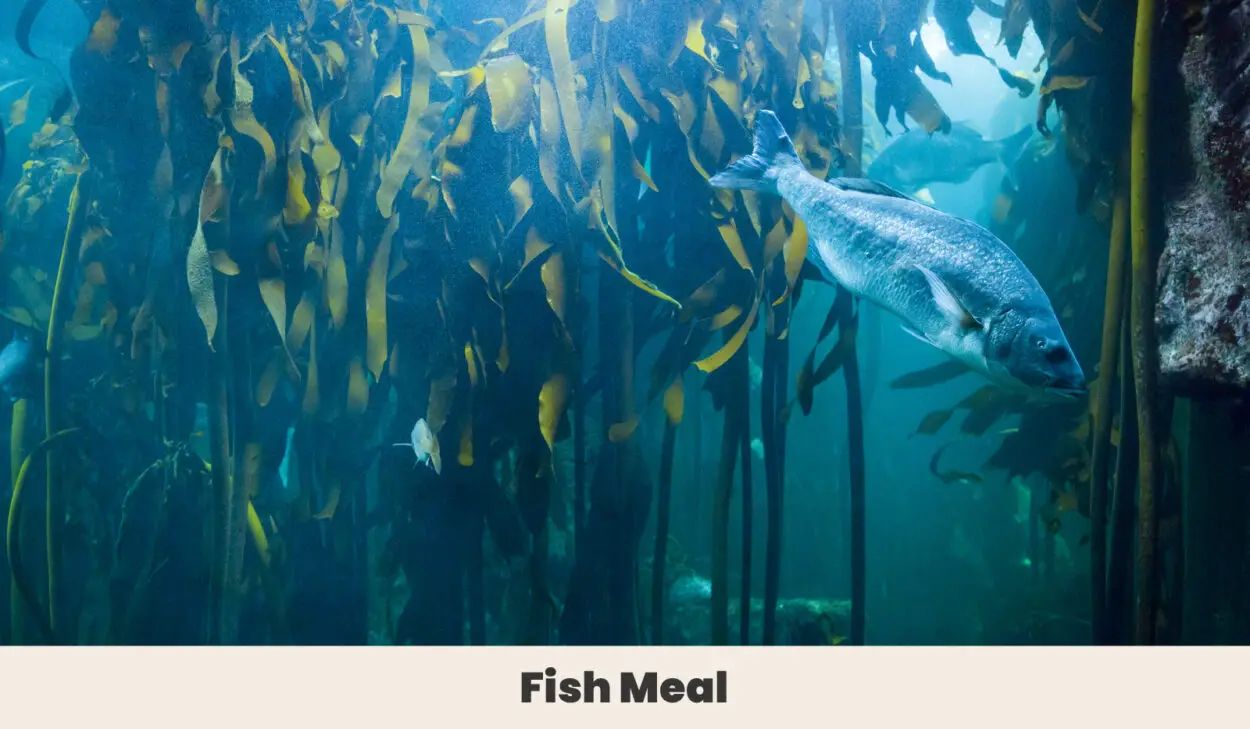
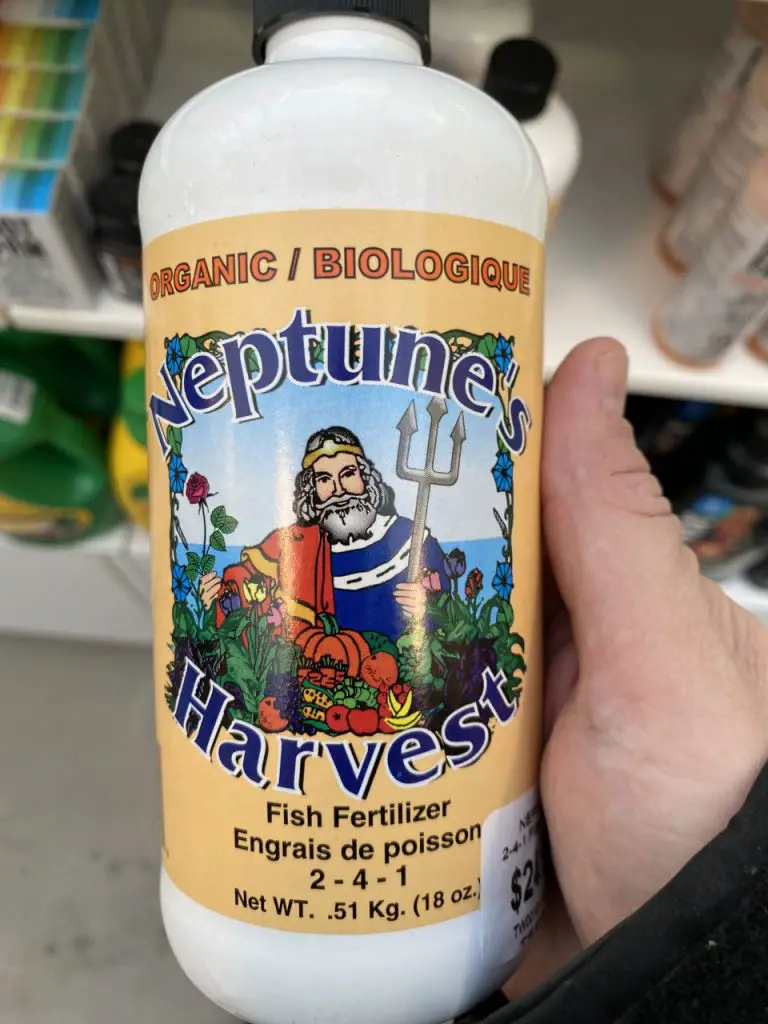
Fish meal is one of my favorite high-nitrogen fertilizers. It’s made from ground fish waste left over from the production of things like fish fillets and other foodstuffs. It’s high in nitrogen and phosphorus but contains a wide variety of other bio-available minerals as well. Its exact composition will vary from brand to brand, most brands of fish meal can be upwards of 15% or more.
That said, if there’s something that reeks as much as bone meal, it’s fish meal. It’s like being haunted by the vengeful ghost of forgotten seaside meals. If you’re of delicate constitution it may be best to try a different source of nitrogen.
3. Feather Meal
Feather meal is a by-product of the poultry industry and is exactly what you’d expect – a finely ground material made of feathers. It’s one of the richest sources of naturally occurring nitrogen, coming in at between 7-12% nitrogen by weight. It’s best mixed into composts or mulch as that’s about all it contains, but it has the benefit of being very slow-release and long-lasting. It’s a good option to add to mulches you fear may be too low in nitrogen, too.
4. Blood Meal
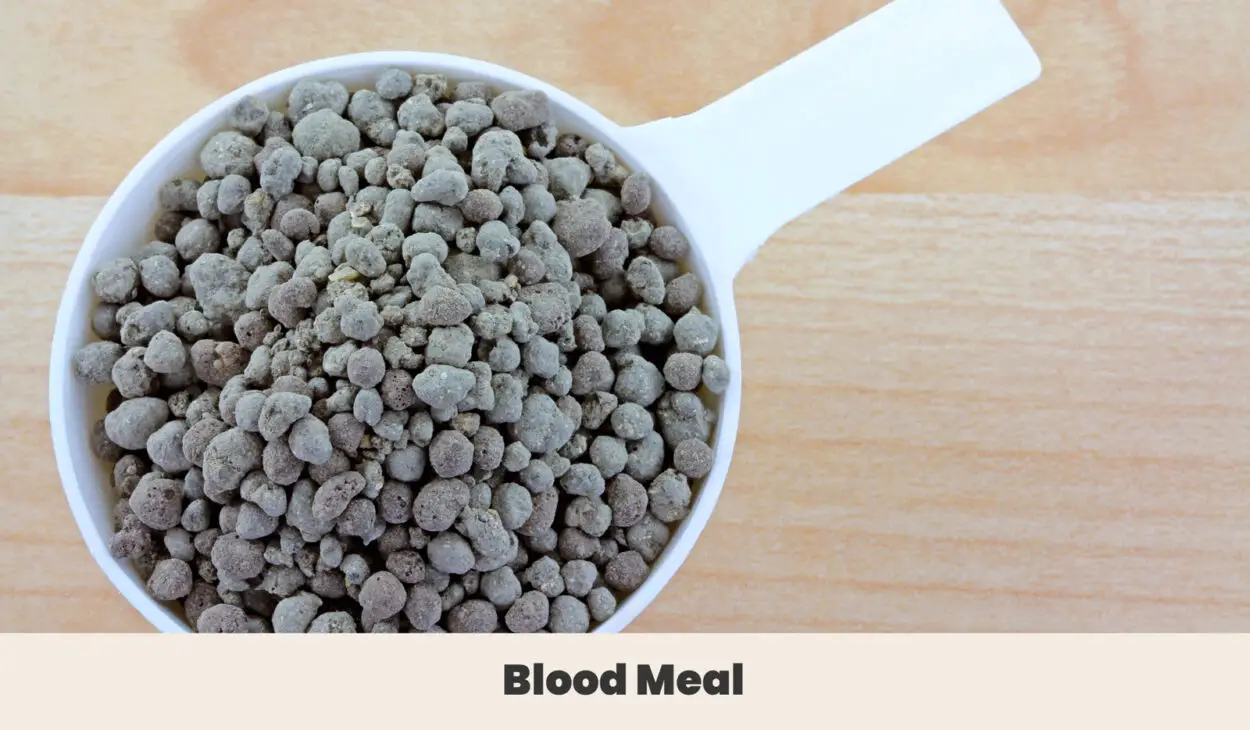
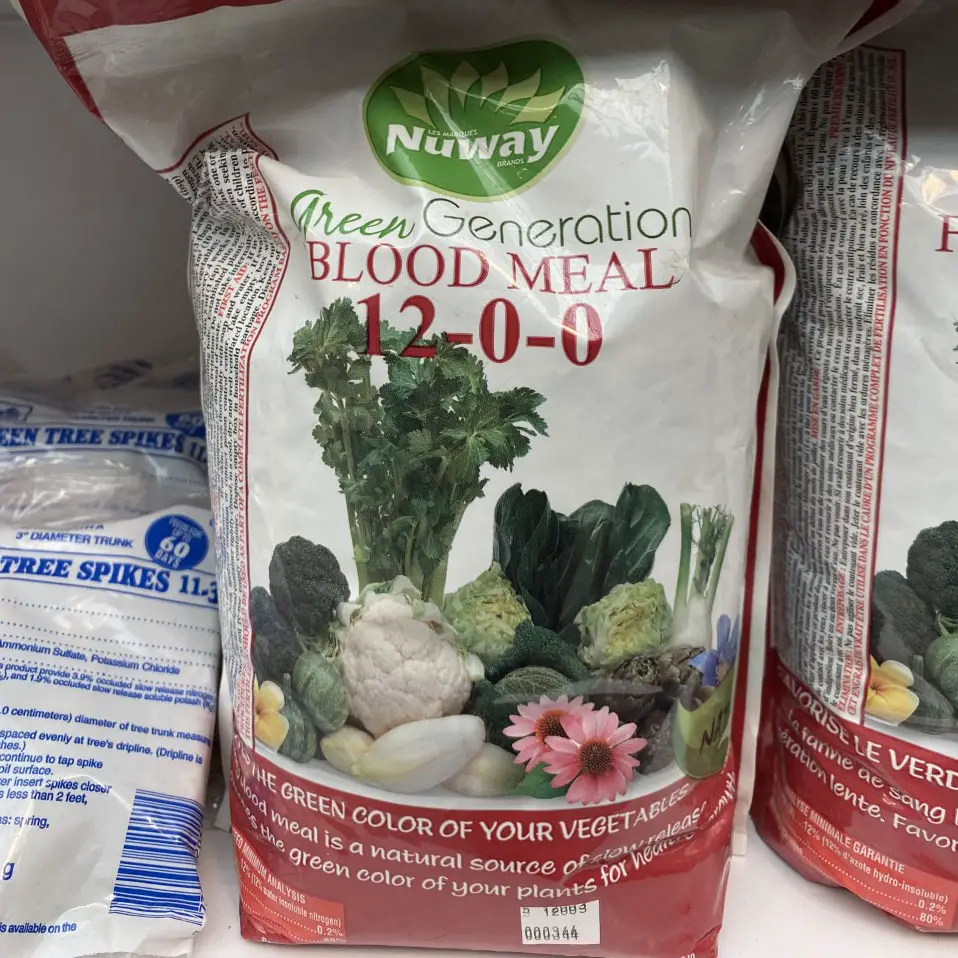
A vampire’s delight, blood meal is made from slaughterhouse blood, another sustainable option. It’s heated and refined to make sure it’s safe to use. Blood meal packs quite a punch and typically has around 12% or so nitrogen by weight. It’s also rich in a few other key micronutrients, most notably iron. Like bone and fish meal, it’s not a pretty thing to smell, but it really does get the job done.
When to use high-nitrogen fertilizer
During planting and establishment
The best time to amend soil is when you put a plant in the ground. Adding a slow-release, high-nitrogen fertilizer like a feather meal will provide good foundations for the new plant. It’ll recover from its planting better and will have resources to draw on as it establishes itself.
Soil Is Deficient
That said, if you’re starting to see signs of nitrogen deficiency, it’s worth investigating and applying a high-nitrogen fertilizer to compensate. Signs of nitrogen deficiency include.
- Stunted growth
- Yellow leaves
- lack of new shoots
These signs are, unfortunately, also shared by a few other deficiencies, especially iron-deficient chlorosis. Often there’s enough nitrogen in the soil, but other deficiencies or problems – especially those around pH – are making it hard for the plant to absorb it. It really is important to test the soil first before you amend it.
Fast-growing and frequently pruned areas of the garden
Areas that undergo frequent cutting or trimming need more nitrogen than most to replace lost growth. Herb beds and leafy green vegetables are good examples, but for most of us, the most heavily cut region of the garden is the lawn. Lawns in general need more nitrogen, but on the plus side lawn trimmings make a great nitrogen-rich mulch. You can keep the nitrogen you add to the lawn by adding the clippings to your compost or mulch heap, or even just using it directly on garden beds.
Final thoughts
The fertility of our soils is always at the front of a gardener’s mind. The secrets of the soil are a special sort of chemistry, and well worth learning. Give your garden what it needs, and you’ll be surprised how wonderfully it grows.

Before you go!
A Complete Guide to 11 High Potassium Fertilizers
What is 16-4-8 fertilizer good for? A Complete Guide
What Is Bone Meal Fertilizer Used For? A Complete Guide
Humic Acid Fertilizer For Plants: A Complete Guide